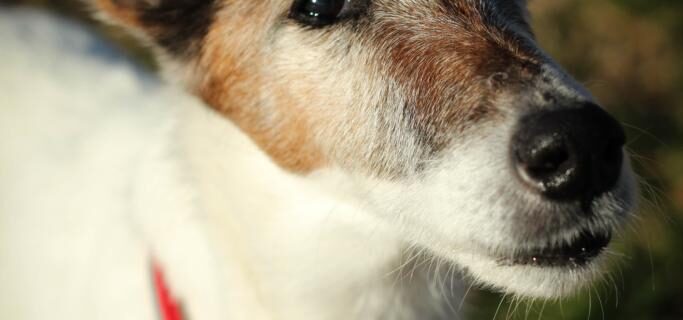Gastropexy, Elective
- Mar, 27, 2016
- DVSC
- Medical Library
- Comments Off on Gastropexy, Elective
Gastropexy is a surgical procedure in which the stomach is permanently adhered to the internal abdominal wall in order to prevent gastric torsion or gastric dilatation-volvulus (GDV). Gastropexy is performed at the same time as GDV surgery, or prophylactically on an elective basis in healthy dogs susceptible to developing GDV. Some veterinarians recommend prophylactic gastropexy […]
Read MoreHip Dysplasia (Overview)
- Mar, 26, 2016
- DVSC
- Medical Library
- Comments Off on Hip Dysplasia (Overview)
Hip dysplasia is one of the most common orthopedic conditions diagnosed in dogs. Hip dysplasia is defined as abnormal growth and development of the hip joint. Hip dysplasia has been shown to have a genetic component, but many parts of the disease’s etiology and pathogenesis are still unclear. Because of the known genetic component to […]
Read MoreHip (Coxofemoral) Luxation
- Mar, 25, 2016
- DVSC
- Medical Library
- Comments Off on Hip (Coxofemoral) Luxation
The hip is the articulation between the femur (thigh bone) and the pelvis. It is considered a “ball-and-socket” joint in which the “ball” is the head of the femur and the “socket” is the acetabulum of the pelvis. Coxofemoral luxation occurs when the head of the femur becomes luxated (dislocated) from the acetabulum. Below […]
Read MoreIntervertebral Disc Disease (IVDD) Percutaneous Laser Disc Ablation LDA
- Mar, 21, 2016
- DVSC
- Medical Library
- Comments Off on Intervertebral Disc Disease (IVDD) Percutaneous Laser Disc Ablation LDA
Percutaneous Laser Disc Ablation (PLDA) is a minimally invasive preventative procedure for thoracolumbar degenerative disc disease in dogs. This procedure was developed by Dr. Kenneth E. Bartels at Oklahoma State University. Hundreds of dogs have undergone percutaneous disc ablation since the procedure was clinically introduced in 1993. PLDA is recommended as a preventative procedure to […]
Read MoreIntervertebral Disc Disease (IVDD)- Care of a Paralyzed Pet
- Mar, 20, 2016
- DVSC
- Medical Library
- Comments Off on Intervertebral Disc Disease (IVDD)- Care of a Paralyzed Pet
There are some spinal conditions that result in paralysis, which is the inability to move the legs. The most common cause of paralysis in dogs is intervertebral disk disease. Most dogs that suffer from disk disease can be cured with medical or surgical treatment, and so their paralysis is only temporary. However, sometimes spinal cord […]
Read MoreIncontinence: Urethral Sphincter Mechanism Incompetence
- Mar, 19, 2016
- DVSC
- Medical Library
- Comments Off on Incontinence: Urethral Sphincter Mechanism Incompetence
Urethral sphincter mechanism incompetence (USMI) is the most commonly diagnosed cause of urinary incontinence in adult dogs, and is second only to ectopic ureters as a cause of incontinence in juveniles. USMI is most commonly seen in female dogs, but is also diagnosed in male dogs as well as cats. The disease can be congenital […]
Read MoreLaryngeal Paralysis
- Mar, 19, 2016
- DVSC
- Medical Library
- Comments Off on Laryngeal Paralysis
Laryngeal Paralysis Overview Laryngeal paralysis is a condition in dogs and cats that results when the nerve that controls one of the muscles in the larynx, the cricoarytenoideus dorsalis (CAD) muscle, is not functioning. This muscle is responsible for opening the arytenoid cartilages of the larynx when an animal breathes so that […]
Read MoreLumbosacral Disease
- Mar, 18, 2016
- DVSC
- Medical Library
- Comments Off on Lumbosacral Disease
Lumbosacral stenosis is a common cause of pain in older, large breed dogs. In some cases the patient may demonstrate intermittent non-weight bearing lameness in one pelvic limb, if the compression is asymmetric. Patients suffering from LS disease generally present with either intense lower back pain or pain/lameness involving one rear leg (root signature […]
Read MoreMedial Patellar Luxation (MPL)
- Mar, 16, 2016
- DVSC
- Medical Library
- Comments Off on Medial Patellar Luxation (MPL)
Medial Patella Luxation What is a medial patella luxation? Medial patella luxation (MPL) is a common cause of orthopedic lameness in both small and large breed dogs. In the simplest terms this condition is when the patella, or “knee cap”, slips in and out of its natural position. Normally the patella sits in a groove […]
Read MoreMicrovascular Dysplasia Mimics Portosystemic Shunt
- Mar, 14, 2016
- DVSC
- Medical Library
- Comments Off on Microvascular Dysplasia Mimics Portosystemic Shunt
Microvascular dysplasia (MD)is a disease in which the patients have abnormal, microscopic communications between the portal and systemic venous systems within the liver parenchyma. These microscopic shunt vessels allow the portal blood to escape normal filtration by the liver parenchyma, similar to a traditional, portosystemic shunt. Breeds affected with MD are similar to traditional […]
Read MoreSearch This Site
Medical Library Posts
- 25+ Years of Neurosurgery at the DVSC
- Anal Sac Adenocarcinoma
- Anal Sac Removal, Elective
- Arthritis
- Arthroscopy
- Atlanto-axial (A-A) instability
- Coxofemoral (Hip) Luxation
- Cranial Cruciate Ligament (CCL) Overview
- Cranial Cruciate Ligament (CCL) – Extracapsular Repair
- Cranial Cruciate Ligament (CCL) – Tibial Plateau Leveling Osteotomy (TPLO)
- Cranial Cruciate Ligament (CCL)-Tibial Tuberosity Advancement (TTA)
- Cutaneous Mast Cell Tumors
- Cystotomy and Scrotal Urethrostomy
- Degenerative Myelopathy
- Diaphragmatic Hernia
- Diskospondylitis
- Ear Canal Ablation and Bulla Osteotomy
- Elbow Dysplasia
- Epidural Analgesia
- Episioplasty
- Feline Perineal Urethrostomy
- Femoral Head Ostectomy (FHO)
- Fibrocartilaginous Embolism (FCE)
- Fibrocartilaginous Embolus in Schnauzers
- Fracture Healing by Biologic Osteosynthesis
- Fracture of the Radius and Ulna in Small breed dogs
- Fracture Repair by Circular External Skeletal Fixator (ESF)
- Gastric Dilatation-Volvulus (Bloat)
- Gastrointestinal Foreign Body
- Gastropexy, Elective
- Hip Dysplasia (Overview)
- Hip (Coxofemoral) Luxation
- Incontinence: Urethral Sphincter Mechanism Incompetence
- The Facts About Backs (IVDD)
- Intervertebral Disc Disease (IVDD) Percutaneous Laser Disc Ablation LDA
- Intervertebral Disc Disease (IVDD)- Care of a Paralyzed Pet
- Laryngeal Paralysis
- Lumbosacral Disease
- Mandibulectomy and Maxillectomy
- Medial Patellar Luxation (MPL)
- Microvascular Dysplasia Mimics Portosystemic Shunt
- Minimally Invasive Surgery in Soft Tissue Applications
- Neurosurgical Postoperative Physical Therapy
- Perianal Fistula Management in Dogs
- Perineal Hernias
- Peritoneopercardial Hernias in Dogs and Cats
- Portosystemic Shunts
- Sialocele (Salivary Mucocele)
- Spinal Fractures and Subluxations
- Splenectomy
- Total Hip Replacement
- Tracheal Collapse
- Triple Pelvic Osteotomy (TPO)
- Underwater Treadmill
- Updates in Fracture Management
- Urethral Prolapse
- Wobblers Disease









